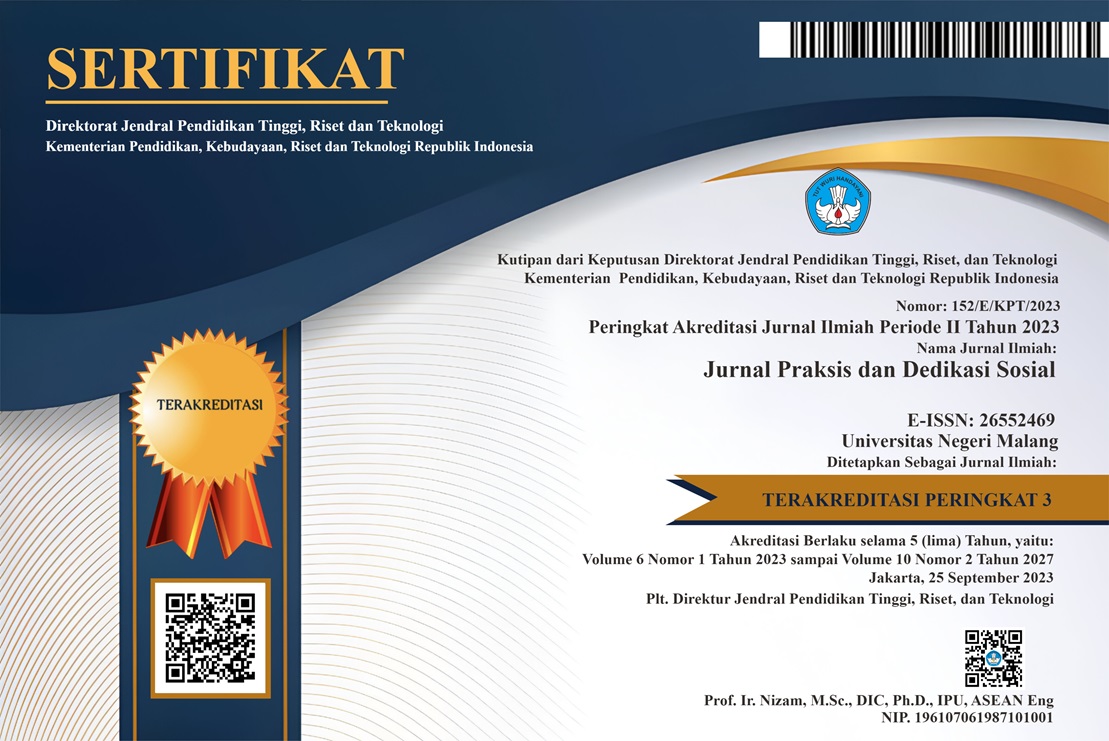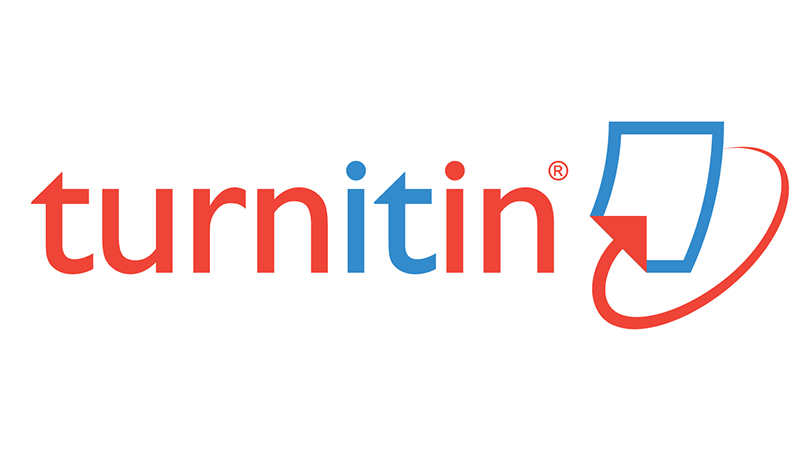Author Guidelines
1. All manuscript shall be written in Indonesian or English and submitted online via journal website on http://journal2.um.ac.id/index.php/jpds/index.
2. All manuscripts should be in Microsoft Word at least 2007 version.
3. The title of the manuscript should be concise and informative, less than 16 words, uppercase, left, bold in English and Indonesian. Titles are often used in information-retrieval systems. The title should be accurate, unambiguous, specific, and completely identify the main issue of the paper. Avoid abbreviations and formulae where possible.
4. Author names should not contain academic title, official rank, or professional position. Please clearly indicate the given name(s) and last/family name(s) -full name if possible- of each author and check that all names are accurately spelled. Present the authors' affiliation addresses (where the actual work was done) below the names. Write clear affiliation of all Authors. Affiliation includes name of the name of university/institution, complete postal address, and country. All contributing authors should be shown in contribution order.
5. Corresponding author clearly for handling all stages of pre-publication, refereeing, and post-publication. This responsibility includes answering any future queries about Methodology and Materials. Ensure that the e-mail address is given and that contact details are kept up to date by the corresponding author.
6.The abstract should be written in English and Indonesian in one paragraph consists of maximum 250 words. The abstract should explain the purpose, method, and the result of the research concisely. Abstract should be concise and factual, and contains neither pictures nor tables. The abstract should state briefly the purpose of the research, research materials and methods, the principal results, and major conclusions. An abstract is often presented separately from the article, so it must be able to stand alone. For this reason, references should be avoided. Also, non-standard or uncommon abbreviations should be avoided, but if essential they must be defined at their first mention in the abstract itself.
7. The keywords should be avoiding general and plural terms and multiple concepts. Be sparing with abbreviations: only abbreviations firmly established in the field may be eligible. These keywords will be used for indexing purposes. Keywords are any terms related to the general issue(s) of the articles and written maximumly 5 keywords.
8. Systematic for research article are:
- Introduction is a part consists of a background of the study, state of the art, and research gap. Explain how you addressed the problem and clearly state the aims of your study. This part shall be presented in the form of the paragraph and with title part.
- Method is a part consists of the design of the research, subject, instrument, data collection procedure, and data analysis. Provide sufficient details to allow the work to be reproduced by an independent researcher. Methods that are already published should be summarized and indicated by a reference. If quoting directly from a previously published method, use quotation marks and also cite the source. Any modifications to existing methods should also be described.
- Results should be clear and concise. Discussion should explore the significance of the results of the work, not repeat them. The following components should be covered in the discussion section: How do your results relate to the original question or objectives outlined in the Introduction section (what)? Do you provide interpretation scientifically for each of your results or findings presented (why)? Are your results consistent with what other investigators have reported (what else)? Or are there any differences?
- The main conclusions of the study may be presented in a short conclusions section, which may stand alone or form a subsection of a discussion or results and discussion section. The conclusion section should lead the reader to the important matter of the paper. Suggestion or recommendation related to further research can also be added but not to confuse the research with an uncompleted work.
- Acknowledgment (Optional), recognize those who helped in the research, especially funding supporter of your research. Include individuals who have assisted you in your study: Advisors, Financial supporters, or may be another supporter, i.e. Proofreaders, Typists, and Suppliers, who may have given materials. Do not acknowledge one of the author’s names.
- Reference, all the references that used in the article must be listed in this part. In this part, all the used references must be taken from primary sources (scientific journals at least 80% from all the references) that published in the last ten years. Each article should have at least 15 references.
9. Each title part shall be written in different types (all title part and subpart shall be written in bold or italic):
- Heading 1 (Uppercase, bold, justify-alignment, 11 pt, and without numbering format)
- Heading 2 (Capitalize each word, bold, justify-alignment, and 11 pt)
- Heading 3 (Capitalize each word, bold, justify -alignment, 11 pt, and italic)
10. Table: table shall be clearly identified using number and title above the table in bold, 10 pt font Arial, centered alignment (i.g: Table 1. The Susceptibility Value). The table shall be positioned in center alignment. The first letter in the table shall be capitalized, except phrases. Table’s data shall be written in single space, 10 pt font Arial. The table shall be presented only in horizontal line and shall be mentioned in the aforementioned paragraph.
11. Figure: Figure shall be presented in average to high resolution and identified using number and title above the figure in bold, 10 pt font Arial, centered alignment (i.g: Figure 1. Schematic of Water Level Sensor). Figure shall be mentioned in the aforementioned paragraph.
12. Citation and Reference are written according to the APA (American Psychological Association) 6th edition style. The references shall be ordered based on alphabetical and chronological order. We recommend to use reference manager application such as Mendeley, End Note, or Zotero. Below are the example of References written according to the APA 6th edition style.
- Bintarto, R. (1982). Metode analisa geografi. Jakarta: LP3ES. →Book
- Matthews, G., Smith, Y., & Knowles, G. (2009). Disaster management in archives, libraries and museums. Farnham, England: Ashgate.→Book
- Maher, B. A. (Ed.). (1964–1972). Progress in experimental personality research (6 vols.). New York: Academic Press. →Book with editor(s)
- Luria, A. R. (1969). The mind of a mnemonist (L. Solotaroff, Trans.). New York: Avon Books. (Original work published 1965) →Book: A Translation (writer: Luria, A. R., translator: L. Solotaroff)
- Poiger, U. G. (1996). Rock 'n' roll, female sexuality, and the cold war battle over German identities. The Journal of Modern History, 68(3), 577-580. doi:10.1086/245343 →Journal (online)
- Jacoby, W. G. (1994). Public attitudes toward government spending. American Journal of Political Science, 38(2), 336-361. Retrieved from http://www.jstor.org.→Journal (online)
- Shelly, D. R. (2010). Periodic, chaotic, and doubled earthquake recurrence intervals on the deep San Andreas fault. Science, 328(5984), 1385-1388.→journal (print)
- Wilkinson, R. (1999). Sociology as a marketing feast. In M. Collis, L. Munro, & S. Russell (Eds.), Sociology for the New Millennium. Paper presented at The Australian Sociological Association, Monash University, Melbourne, 7-10 December (pp. 281-289). Churchill: Celts.→Proceeding
- Makmara. T. (2009). Tuturan persuasif wiraniaga dalam Berbahasa Indonesia: Kajian etnografi komunikasi. (Unpublished master’s thesis) Universitas Negeri Malang, Malang, Indonesia.→Thesis
- Satalkar, B. (2010, July 15). Water aerobics. Retrieved from http://www.buzzle.com→Website
- Cain, K. (2012, June 29). The negative effects of Facebook on communication. Social Media Today RSS. Retrieved from http://socialmediatoday.com→Website
- Menteri Perhubungan Republik Indonesia. (1992). Tiga undang-undang: Perkeretaapian, lalu lintas, dan angkutan jalan penerbangan Tahun 1992. Jakarta: CV. Eko Jaya. →Goverment publication
- Quammen, D. (2008, December). The man who wasn’t Darwin. National Geographic Magazine, 214(6), 106-110. →Magazine
13. All issues regarding permission of citation or software utilization during the process of paper or any issues regarding Intellectual Property Rights related to the author including its legal consequences will be the responsible of the author.
14. The Board is authorized to reject a manuscript based on peer reviewer advice and make a necessary changes or adjustment related with language properties without altering the substance. Substance editing would be consulted with the author first.
15. All manuscripts submitted will not be in charge (free of charge).
Below is the manuscript template, you can download it
here.
Author Fees
This journal charges the following author fees.
Fast-Track Review: 250000.00 (IDR)
With the payment of this fee, the review, editorial decision, and author notification on this manuscript is guaranteed to take place within 4 weeks.
Article Publication: 1000000.00 (IDR)
If this paper is accepted for publication, you will be asked to pay an Article Publication Fee to cover publication costs.









